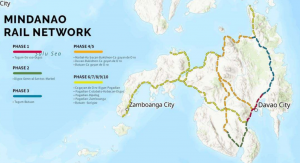 By John Patrick L. Paumig
By John Patrick L. Paumig
THE BIR has been blazing ahead with its agenda of digital transformation. To recall, the BIR laid out its digital transformation plan in Revenue Memorandum Order (RMO) No. 42-2022, outlining its blueprint for the Digital Transformation (DX) Program.
The program contains the BIR Roadmap for 2020–2030. The ultimate goal of the BIR DX Program is to improve tax collections through digitalization. In line with this, the BIR has been issuing several issuances. Then, the Ease of Paying Taxes (EOPT) law was signed into law, legislating for the modernization and digitalization of the BIR.
In this article, we will be focusing on the Principal and Supplementary Invoices generated with Cash Register Machines (CRM), Point-of-Sale (POS), Sales Receipting Software (SRS), and Other Sales Machines Generating Invoices/Receipts (or collectively referred to as “sales machines/software”).
In particular, the BIR issuance of RMO No. 24-2023 aligned Revenue Memorandum Circular (RMC) No. 68-2015 and RMO No. 10-2005 on the harmonization and standardization of accreditations for sales machines/software and the recent implementation of the Ease of Paying Taxes (EOPT) law through Revenue Regulations (RR) No. 07-2024. Both regulations affected the invoicing requirements for invoices generated by sales machines/software.
Revenue Regulations (RR) No. 7-2024 versus Revenue Memorandum Order (RMO) No. 24-2023
With these rapid changes, taxpayers ought to be reminded of the important changes in POS accreditations and the guidelines set under RR No. 7-2024 and RMO No. 24-2023. After all, non-compliance with the mandatory information to be reflected in the invoices runs the risk of disallowance of said invoices, or worse, administrative penalties and criminal liability for the taxpayer.
The matrix below shows the required information to be shown in the invoices per RR No. 7-2024 versus RMO No. 24-2023.
| Information required to be shown in the Invoices | |
| RMO No. 24-2023 | RR No. 7-2024 |
| a. The following salient information must be shown as header of invoices/receipts: i. Registered Name of the Seller |
a. Taxpayer (Seller) Registered Name as shown in BIR Certificate of Registration At the option of the taxpayer, in addition to its BIR-registered name, the taxpayer may choose to add its DTI Registered Business Name or Trade Name in SEC Articles of Incorporation/Partnership/Certificate of Incorporation of the taxpayer (Seller) |
| ii. Business Name or Style, if any, based on the clarifications provided on RMC No. 55-2019 | [Amended/Removed by EOPT] |
| iii. Detailed business address of the seller | b. Registered business address where the invoice shall be used; |
| iv. The phrase “VAT REG TIN” or “NON VAT REG TIN”, whichever is applicable, followed by the nine-digit Taxpayer Identification Number (TIN) with the five-digit Branch Code of the Seller; | c. Statement that the seller is a VAT or non-VAT registered person followed by the seller’s TIN and Branch Code |
| v. Machine Identification Number (MIN) | [Moved to a specific portion per Regulations] Printed prominently at the TOP PORTION of the Invoices generated from Cash Registered Machine (CRM)/Point-of-Sale Machine (POS)/Other Similar Machines or Software: Top Portion: 1. Machine Identification Number (MIN) 2. Serial Number of the CRM/POS machine (if branded machine) and/or Serial Number of the Hard Disk Drive and/or Software License Number (if cloned machine); 3. For reprinting of the invoice, the word “REPRINT” should be prominently indicated; |
| vi. Serial Number of the sales machine (if branded) and the Serial Number of the Hard Disk Drive and/or Software License Number (if cloned machine) pursuant to RR No. 5-2005, as amended; | |
| b. Invoice/Receipt number prominently shown with a minimum of six (6) digits running Serial Number appended with a Reset Counter, if applicable; (Note: If the system generates a transaction number, SI/OR number should be a different series.) | d. Serial Number printed prominently e. The term Invoice is printed or included (e.g. Sales Invoice, Commercial Invoice, Cash Invoice, or any similar description followed by the word “Invoice”) |
| c. Date of Transaction | f. Date of Transaction |
| d. Customer/Buyer Details – Name, Address, TIN, and Business Style for VAT, SI/OR as reiterated by RMC No. 64-2015 pursuant to RR No. 16-2005, if applicable | g. Space provided for the registered name, registered business address, and TIN of the Buyer. If the sale of goods or services are directly between a business and consumers [Business-to-Consumer (B2C)] who are the end-users of its products or services, the business address and TIN of the buyer are not required to be included |
| e. Quantity | h. Quantity |
| f. Description of the items/goods or nature of service rendered; | i. Description of the goods or properties or nature of the service |
| g. Unit cost | j. Unit cost |
| h. Total cost | k. Total amount of sale (if VAT-registered, VAT is included in the total amount) |
| i. VAT amount (if the transaction is subject to 12% VAT) | l. VAT amount shall be shown as a separate item |
| j. If the seller is engaged in mixed transactions, the sales amount shall be broken down into: VATable Sales, VATable Exempt Sales, and Zero-Rated Sales; | m. If the VAT Taxpayer is engaged in mixed transactions, the sales involved shall be broken down into: VATable Sales, VAT Amount, Zero Rated Sales, and VAT Exempt Sales n. If the VAT Taxpayer opts to issue separate invoices for the VATable sale, exempt, and zero-rated components of the sale, the term “VAT-Exempt Sale” is written or printed if the sale is subject to zero percent (0%) VAT. |
| k. The phrase “THIS DOCUMENT IS NOT VALID FOR CLAIM OF INPUT TAX” in bold letters must be conspicuously printed at the bottom of supplementary invoices/receipts | o. For supplementary documents such as official receipts, delivery receipts, order slips, purchase orders, acknowledgment receipts, collection or cash receipts, credit/debit memos, job orders, and other similar documents that form part of the accounting records of the taxpayer and/or issued to their customers, it is required, in addition to the above-enumerated applicable information, that the phrase “THIS DOCUMENT IS NOT VALID FOR CLAIM OF INPUT TAX.” in bold letters, be conspicuously printed at the face of such supplementary documents. |
| l. The word “EXEMPT” must be prominently shown on the face of the invoices/receipts of the taxpayers whose transactions are not subject to both VAT or Percentage Tax that will issue non-VAT principal invoices/receipts | p. Taxpayers whose transactions are not subject to VAT or percentage tax shall issue non-VAT Invoice indicating at the face of such invoice the word “EXEMPT” |
| m. The breakdown of Sales Subject to Percentage Tax (SSPT) and Exempt Sales must be indicated on non-VAT principal invoices/receipts, if taxpayer is subject to Percentage Tax | q. If the taxpayer is not VAT-Registered and is subject to percentage tax under Title V of the Tax Code, but sells goods/services under Section 109 (A) to (CC) except (E) of the same Section, then the Non-VAT Invoice shall indicate the breakdown of Sales Subject to Percentage Tax (SSPT) and Exempt Sales |
| n. The following information must be provided if the taxpayer shall transact with Senior Citizen (SC), Person with Disability (PWD), National Athletes and Coaches (NAAC), and/or Solo Parent, respectively: i. SC/PWD/NAAC/Solo Parent TIN, if any; ii. OSCA/PWD ID/Philippine National Sports Team (PNSTM) Identification Card No./Solo Parent Identification Card No.; iii. SC/PWD/NAAC/Solo Parent Discount; iv. Signature of the SC/PWD/NAAC/Solo Parent; |
r. For taxpayers transacting with (1) Senior Citizen/s (SC/s) and/or Person/s with Disability (PWD/s); (2) National Athletes and Coaches (NAAC/s); Solo Parents; and Medal of Valor (MOV) awardee or his/her dependents, it is required that a space for the following be provided: i. SC ID No. or any other government ID showing the name, picture, date of birth and nationality/PWD ID No./Philippine National Sports Team (PNSTM) ID No./Solo Parents ID No./MOV ID or MOV Dependent ID No.; ii. Amount of discount showing a detailed breakdown of the 5% or 20% discount and 12% VAT Exemption, whichever is applicable iii. Signature of the Senior Citizen/PWD/NAAC/Solo Parent/MOV Awardee or his/her qualified dependent: Provided, that for qualified purchases made by Senior Citizens/PWDs online or through a mobile application, their physical signatures in the Invoices are not required |
| o. The following shall be printed at the bottom portion of the OR/SI/CI: i. Name, Address, and TIN with 5-Digit Branch Code of the accredited supplier of sales machines; ii. Accreditation number and the date of accreditation (date issued and valid until) of the accredited supplier; and iii. PTU Number and the Date Issued or Authority to Generate (ATG) Control Number (whichever is applicable) |
s. The following information shall be printed at the BOTTOM PORTION of the Invoices generated from CRM/POS Machine/Other Similar Machine or Software: i. BIR Final Permit-to-Use (PTU) |
Are EOPT changes minor or major enhancements for sales machines/software?
Per Section 8 of RR No. 7-2024, taxpayers using CRM/POS/E-Receipting/E-Invoicing (or using sales machines/software) may change the word “Official Receipt (OR)” to “Invoice”, “Cash Invoice”, “Charge Invoice”, “Credit Invoice”, “Billing Invoice”, “Service Invoice”, or any name describing the transaction, without the need to notify the Revenue District Office(s) (RDOs) having jurisdiction over the place of business of such sales machines, since the reconfiguration is treated as a minor enhancement, which shall not require the reaccreditation of sales software/system on the part of the supplier and the reissuance of the Permit-to-Use on the part of the taxpayer-user .
On the other hand, Part IX of RMO No. 24-2023 provides that taxpayer suppliers that were granted accreditation prior to the effectivity of the regulation shall only remain valid until its expiration or if such sales machines/software have undergone enhancement. In such cases, the sales machines/software must undergo reaccreditation to check their compliance with the requirements of RMO No. 24-2023 and other revenue issuances related to the accreditation of POS.
Further, Part IV of RMO No. 24-2023 defines minor enhancements, which will only require notification to the BIR of such enhancements. Major enhancements, on the other hand, will require reaccreditation since they introduce additional functionality that is not part of the original accreditation.
However, since RR No. 7-2024 only mentioned the “change of word” of “Official Receipt” to “Invoice” (or its equivalent variants) as a minor enhancement it shall not require reaccreditation. How would sales machines/software suppliers change their existing invoice as to other requirements considering that the mandatory information per RMO No. 24-2023 is different from RR No. 7-2024? Should the taxpayers opt not to amend to avoid the risk of reaccreditation, or should the taxpayers change their POS-issued Invoice to comply with RR No. 7-2024? Are mere formatting changes to comply with RR No. 7-2024 in the POS-issued Invoice deemed as a major enhancement requiring reaccreditation? As an example, the discount granted to Medal of Valor Awardees is not part of RMO No. 24-2023 and was introduced to be included under RR No. 7-2024. Does this mean that the sales machine/software supplier must create a ‘backend report’ for invoices issued to Medal of Valor Awardees similar to the ‘backend report’ for Senior Citizens to comply with the requirement under RMO No. 24-2023?
Apparently, as the BIR is still sorting out its regulations and guidelines, taxpayer-suppliers’ patience is encouraged as the BIR, along with other government agencies, pushes for modernization. Indeed, the push for digitalization and modernization of the BIR would not only serve to further strengthen the tax collection and administration of the agency but would also serve to provide convenience to the people in the near future. After all, 2030 is just six years away.
———————————-
This shall pertain to ‘Suppliers’ or ‘Pseudo-Suppliers’ which are taxpayer-user of “sales machines/software” who are either of the following:
- Direct Importer or local distributor of “sales machines/software” similar sale machines/software generating invoices/receipts.
- Taxpayer-users who developed their own “sales machines/software” or a local buyer of customized “sales machines/software” for their own internal use and/or for distribution to their branches, franchisees and/or related companies.
- This pertains to the taxpayers who bought “sales machines/software” from Accredited Suppliers.
_______________________________________________________________________________________________________
John Patrick L. Paumig is a Manager of Tax Advisory and Compliance at P&A Grant Thornton. One of the leading audit, tax, advisory, and outsourcing firms in the Philippines, P&A Grant Thornton is composed of 29 Partners and 1,500 staff members. We’d like to hear from you! Tweet us: @GrantThorntonPH, like us on Facebook: P&A Grant Thornton, and email your comments to pagrantthornton@ph.gt.com. For more information, visit our website: www.grantthornton.com.ph.


